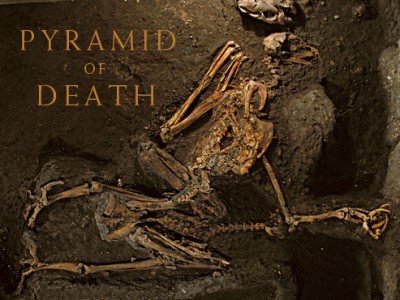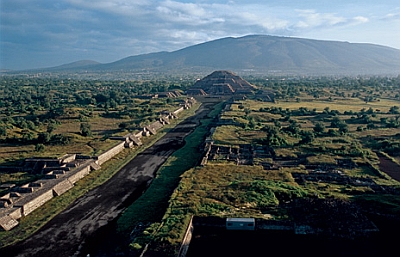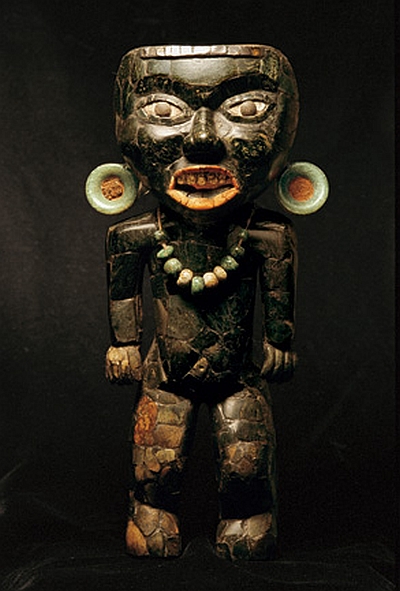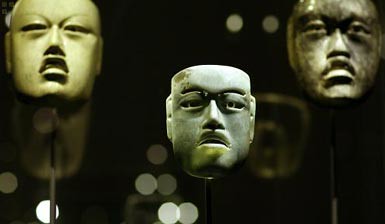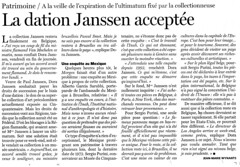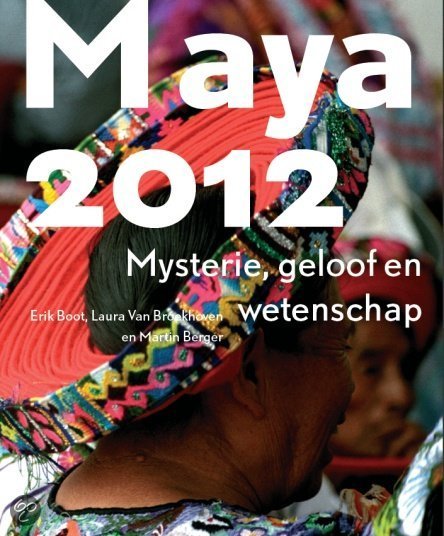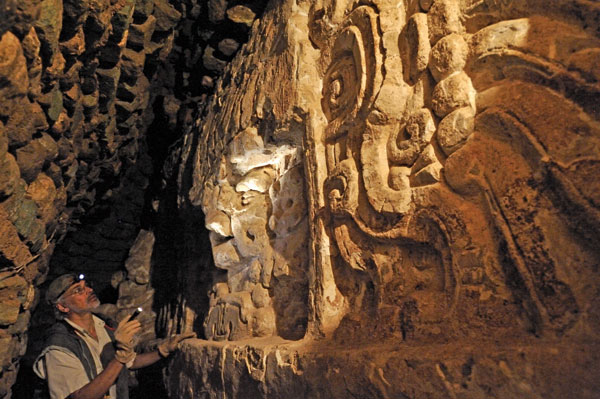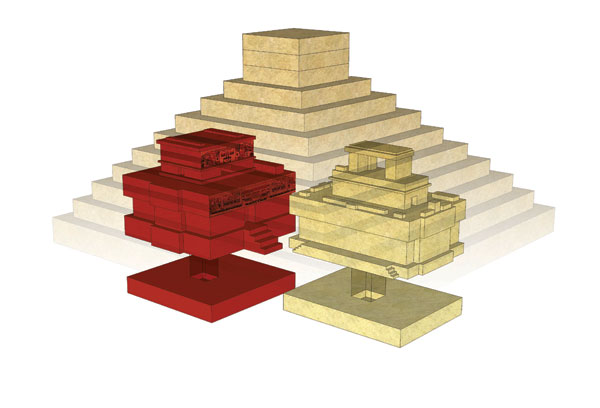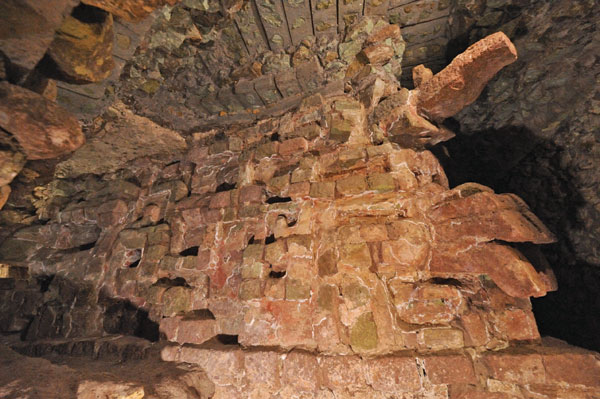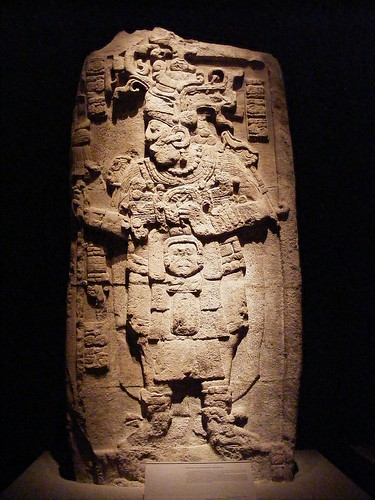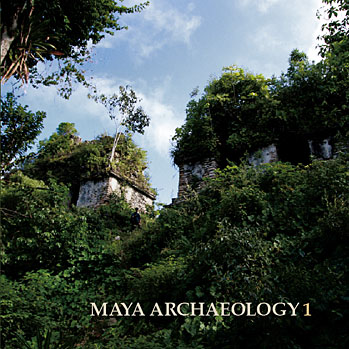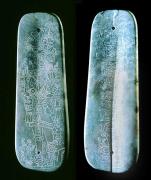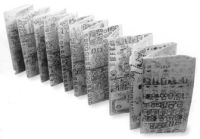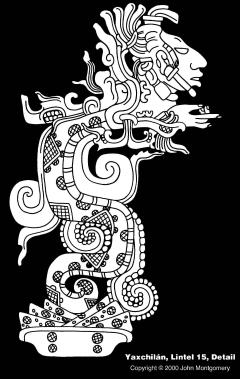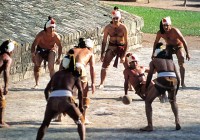
Maya News Updates 2006, No. 44: Temporary Exhibition at the Teotihuacan Site Museum on Latest Discoveries at the Pyramid of the Moon
This Maya News Update is directed to Central Mexico and the city of Teotihuacan. Inaugurated on October 2, 2006, a temporary exhibition on the latest discoveries at the Pyramid of the Moon at Teotihuacan can be visited until December 2006. Below the text can be found as posted by the Mexican Instituto Nacional de Arqueologia e Historia (edited by Maya News Updates):
SACRIFICIOS DE CONSAGRACIÓN EN LA PIRÁMIDE DE LA LUNA, EXPOSICIÓN EN LA ZONA ARQUEOLÓGICA DE TEOTIHUACAN La muestra se compone por 110 piezas arqueológicas del Proyecto Pirámide de la Luna
Cuando en el año 2004 se dio a conocer el hallazgo del Entierro 6, ubicado en el interior de la Pirámide de la Luna, la idea que se tenía de Teotihuacan como un Estado pacifista se cimbró, pues la ofrenda estaba compuesta en gran medida por restos humanos que mostraban huellas de sacrificio, un hecho inusitado –salvo en el Templo de Quetzalcoatl- dentro de los trabajos arqueológicos en el sitio.
¿Cómo se llevó a cabo la excavación dentro de esa edificación? ¿De qué manera se hallaban dispuestas las osamentas? Estos y otros importantes datos acerca de las prácticas religiosas en la gran urbe mesoamericana son motivo de la exposición temporal Sacrificios de consagración en la Pirámide de la Luna, que a partir de este lunes 2 de octubre está abierta al público en el ex museo de sitio de la zona arqueológica de Teotihuacan, ubicado en la puerta de acceso número 1.
En la parte introductoria se mostrarán los aportes del Proyecto Pirámide de la Luna, con piezas correspondientes a los entierros 2, 3, 4 y 5, es decir, los ejemplos más destacables. Sin embargo, la presentación del número 6 implica su reconstrucción.
En la parte introductoria se mostrarán los aportes del Proyecto Pirámide de la Luna, con piezas correspondientes a los entierros 2, 3, 4 y 5, es decir, los ejemplos más destacables. Sin embargo, la presentación del número 6 implica su reconstrucción.
Este entierro se compone de doce esqueletos humanos, 10 de los cuales fueron depositados en conjunto, y que aluden a individuos decapitados; y otras dos osamentas completas alejadas de este primer grupo, que contaban con ricos ajuares.
La exposición también presenta 12 ejemplares completos o semicompletos, entre los que destacan aves rapaces, felinos y cánidos, y una selección de algunas de las ofrendas encontradas en el Entierro 6, entre cuyos objetos sobresale una figura antropomorfa conformada por más de 300 teselas de serpentina verde.
La colección de 110 piezas arqueológicas será complementada con material audiovisual que dará cuenta de la labor de excavación efectuada al interior de la construcción como parte del Proyecto Pirámide de la Luna (1988-2004), así como del arduo trabajo de restauración en torno a la citada figura antropomorfa, “a fin de que el público presencie e imagine cómo fue esta experiencia”.
El Proyecto es dirigido por los arqueólogos Saburo Sugiyama y Rubén Cabrera y fue subvencionado por el gobierno japonés, la Universidad Estatal de Arizona, la National Geographic Society y el Instituto Nacional de Antropología e Historia. Aunque en 2004 se dio conclusión a los trabajos de campo, se continúa con el trabajo de gabinete y análisis de materiales.
De acuerdo con Sugiyama y Cabrera, por el momento los testimonios demuestran que pese a la existencia de un discurso público estatal --donde no abundan las escenas explícitas de sacrificio y guerra-- los teotihuacanos hacían frecuentemente inmolaciones masivas de hombres y estaban involucrados en un ambiente de guerra endémica, al igual que los zapotecos y los mayas contemporáneos.
Comentaron que la excavación y el análisis de los restos humanos del Entierro 6 han permitido conocer las prácticas de sacrificio y los tratamientos mortuorios realizados en Teotihuacan, y contribuyen al conocimiento de esta población en su dimensión biológica y social.
Esta revelación, junto con los descubrimientos realizados en el Templo de Quetzalcoatl y en otras temporadas en la propia Pirámide de la Luna, permitirán revalorar el papel del militarismo en esta ciudad.
La exposición temporal Sacrificios de consagración en la Pirámide de la Luna se exhibirá en el ex museo de sitio de la zona arqueológica de Teotihuacan (puerta 1) hasta diciembre de 2006, de lunes a domingo, de 9:00 a 16:30 horas.
Comments by Maya News Updates: The illustrations that are included in the above INAH daily notice (of October 7, 2006) are from the online Teotihuacan report in the latest issue of National Geographic Magazine (October 2006). The first photograph is the cover photograph to the online report "Pyramid of Death" with 11 photographs, the second photograph presents a view of the Pyramid of the Moon (one of the 11 photographs), and the third photograph illustrates a statuette found at the Pyramid of the Moon (also one of the 11 photographs) (all photographs resized).
